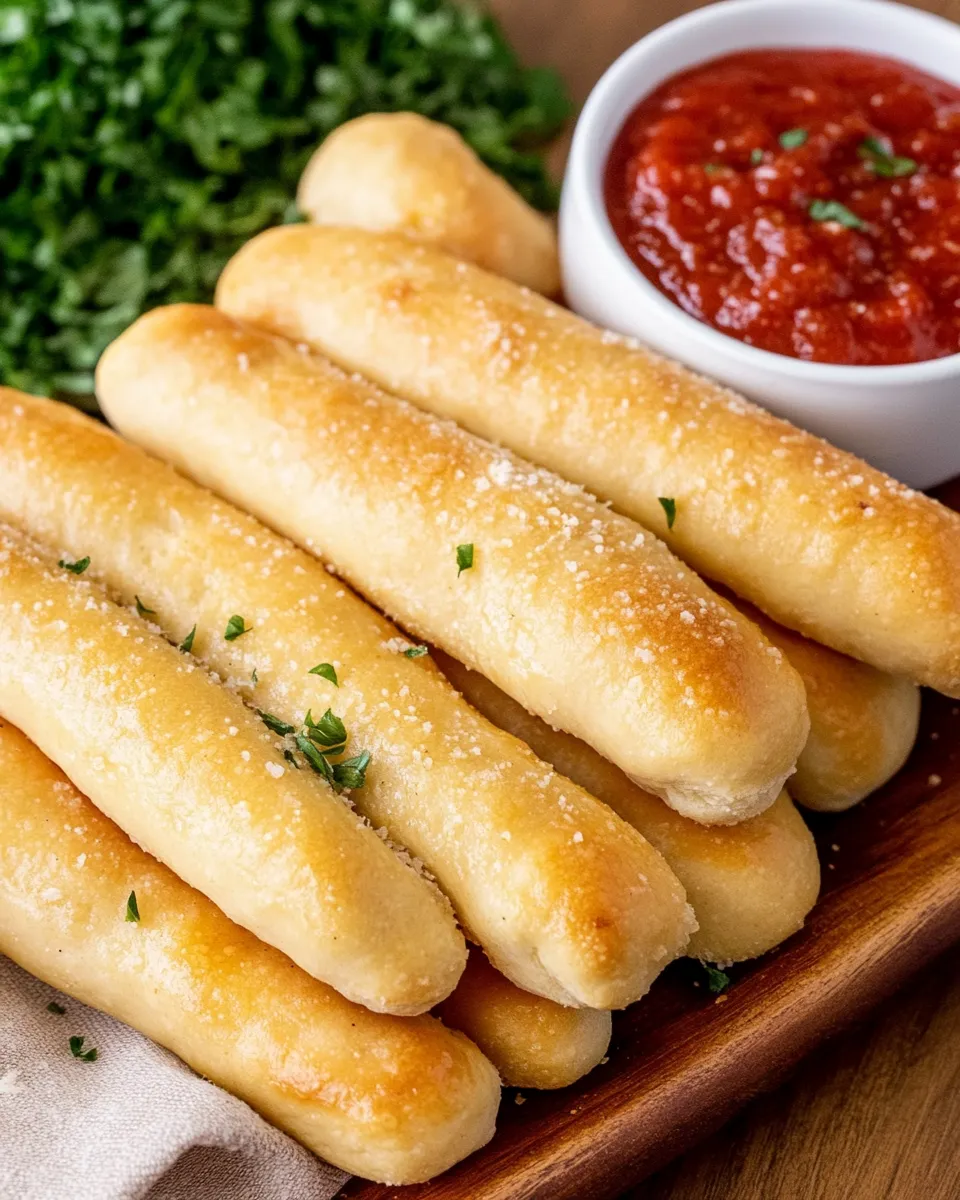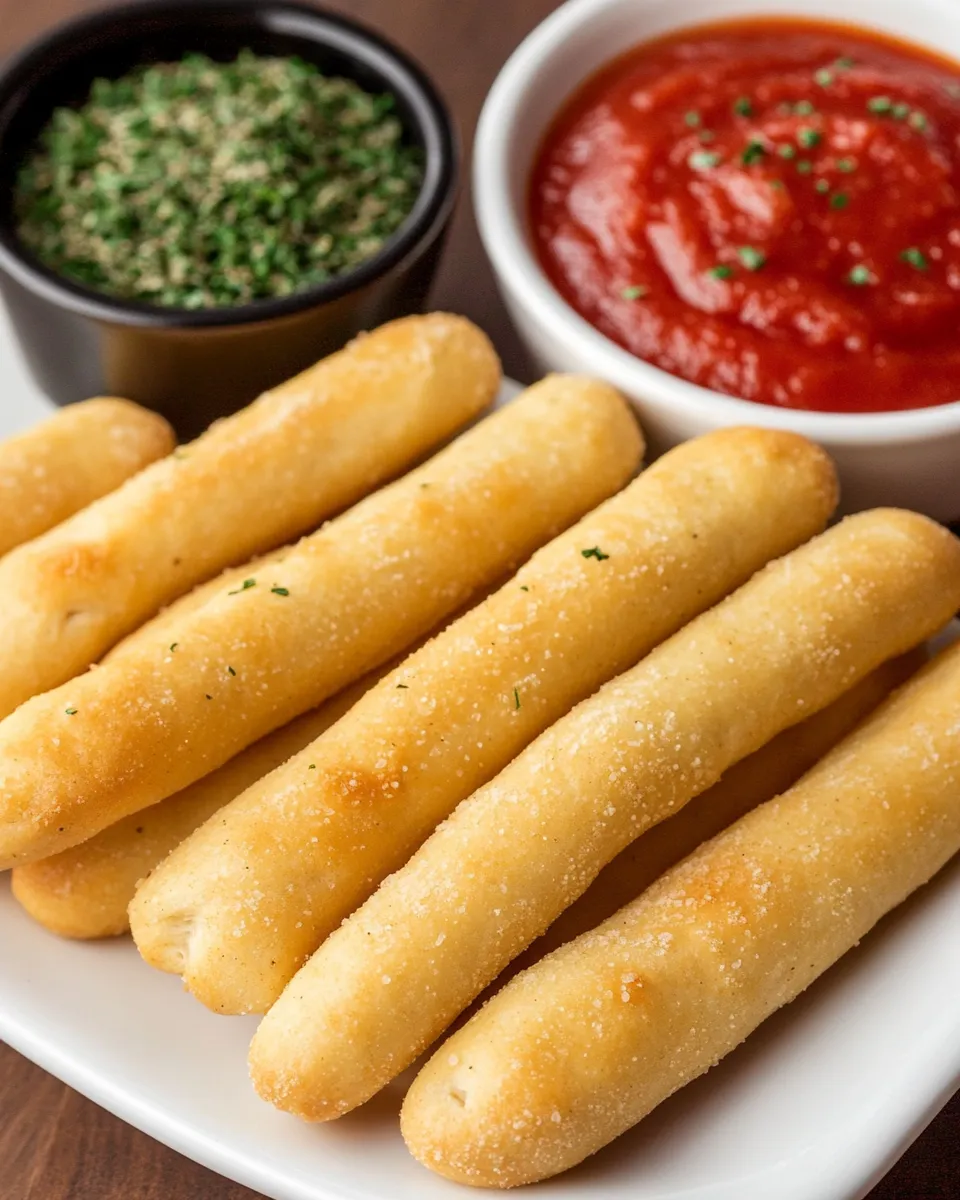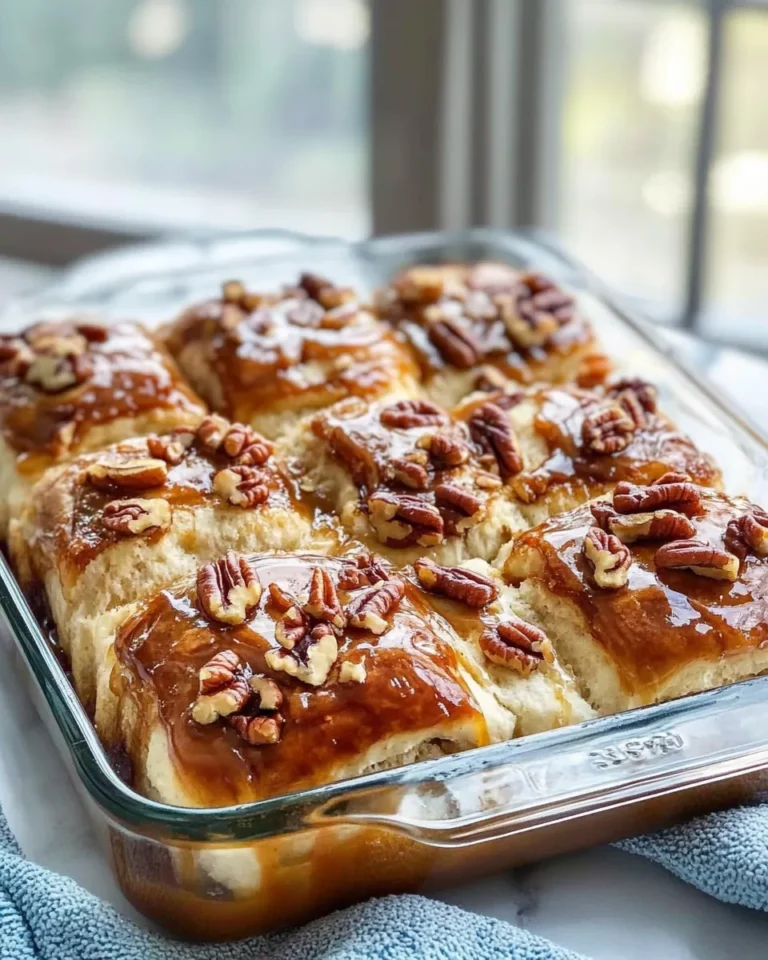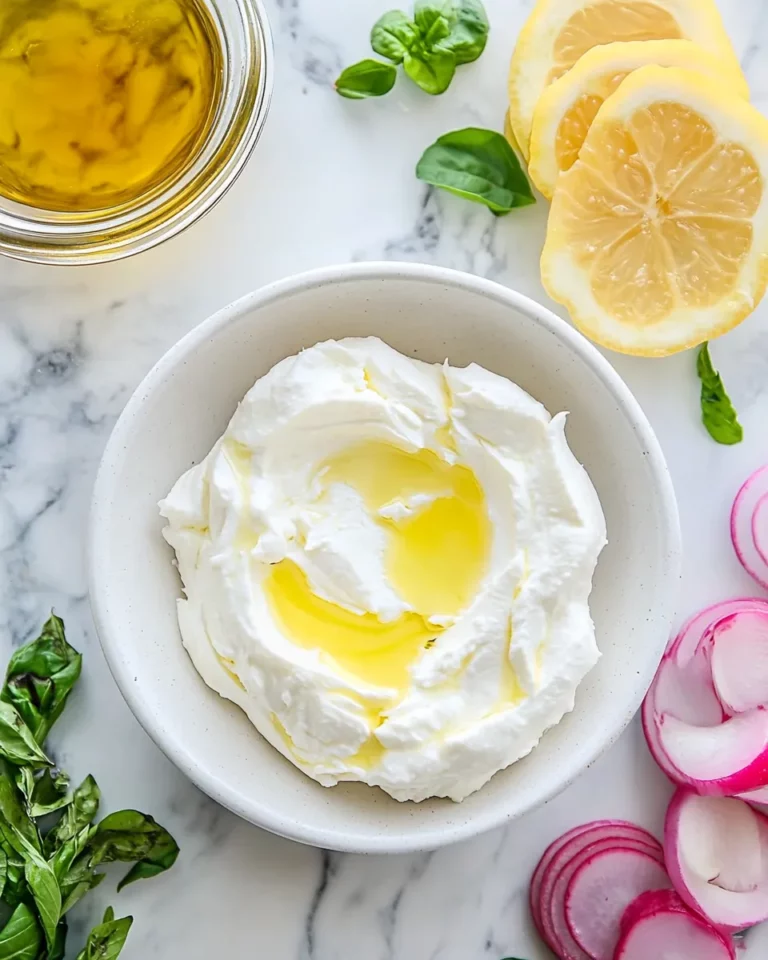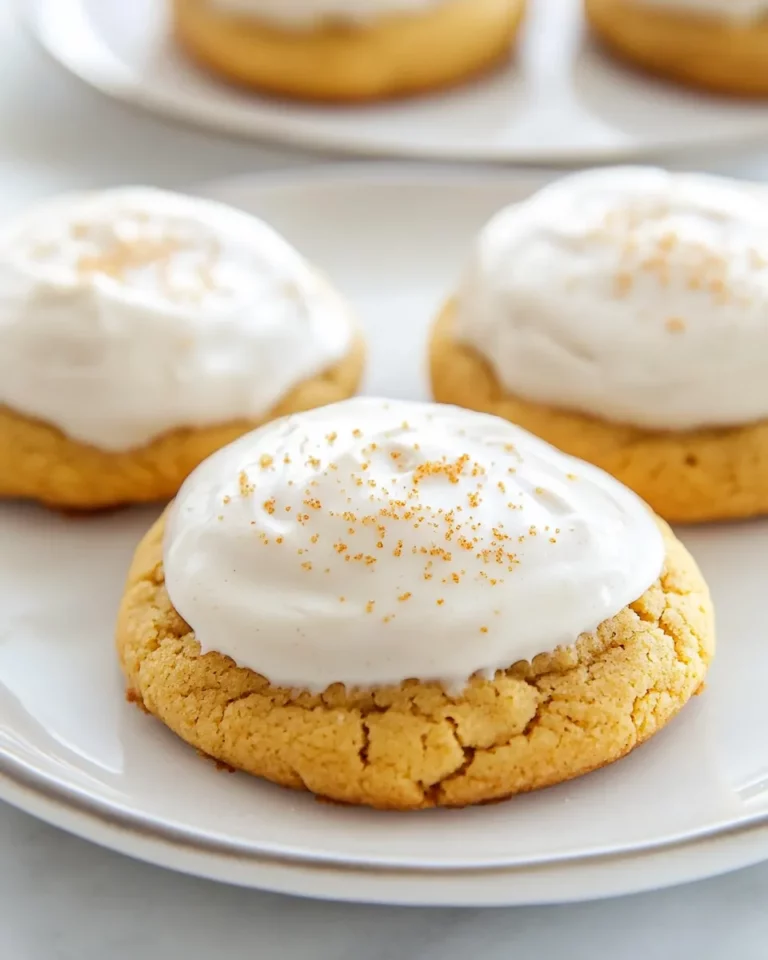Olive Garden Breadsticks
Few things compare to the warm, soft, and buttery goodness of Olive Garden breadsticks. Whether you’re indulging in a bowl of pasta or simply craving a comforting snack, these breadsticks hit the spot every time. This recipe brings you an easy-to-follow guide to recreating that iconic breadstick right in your own kitchen. With simple ingredients and straightforward steps, you’ll be pulling golden, fluffy breadsticks from your oven that taste just like the restaurant version. Ready to impress your family or guests with this irresistible treat? Let’s get baking!
Why This Recipe Is a Must-Try
If you’ve ever wished you could make Olive Garden’s famous breadsticks at home, this recipe is your answer. It’s designed to be simple yet authentic, using common pantry staples and easy techniques to replicate that perfect texture and flavor. The dough is soft and chewy, with a slightly crispy exterior and a rich buttery finish. Plus, this recipe doesn’t rely on any hard-to-find ingredients or special equipment, making it accessible for home bakers of all skill levels. Whether you’re a seasoned pro or a beginner, these breadsticks will elevate your meals and satisfy your carb cravings like no other.
Ingredients
- 1 and ½ cups warm tap water (NOT boiling or super hot, up to 130°F / 55°C) (see note 1)
- 2 tablespoons granulated sugar
- 2 teaspoons dry yeast (see note 2)
- 4 and ½ cups bread flour
- 2 teaspoons salt
- 3 tablespoons unsalted butter, melted
How To Make Olive Garden Breadsticks
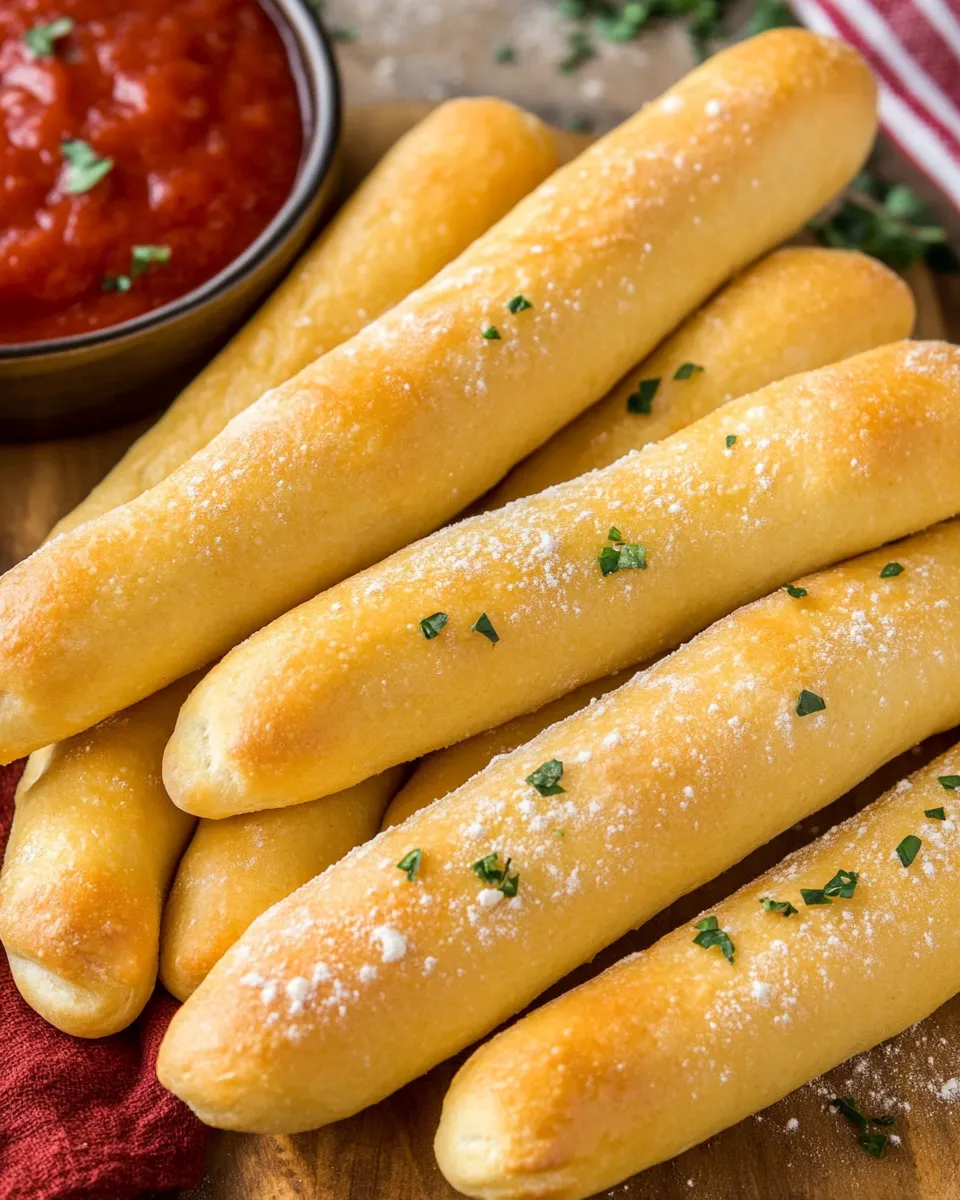
Step 1: Activate the Yeast
Start by warming your water to just under 130°F (55°C). This temperature is crucial because it wakes up the yeast without killing it. In a large mixing bowl, combine the warm water, sugar, and dry yeast. Stir gently and let it sit for about 5 to 10 minutes until the mixture becomes frothy and bubbly. This means your yeast is active and ready to work.
Step 2: Mix the Dough
Once the yeast is activated, add the bread flour and salt to the bowl. Using a wooden spoon or your hands, mix the ingredients until they start to come together into a shaggy dough. If the dough feels too sticky, add a little more flour, a tablespoon at a time, until it’s manageable but still soft.
Step 3: Knead the Dough
Transfer the dough onto a clean, lightly floured surface. Knead for about 8 to 10 minutes until the dough is smooth, elastic, and no longer sticky. This step develops the gluten, which gives the breadsticks their chewy texture.
Step 4: First Rise
Lightly grease a large bowl with some melted butter or oil. Place your dough inside, turning it to coat all sides. Cover the bowl with a clean kitchen towel or plastic wrap and let it rise in a warm, draft-free spot for 1 to 1.5 hours, or until the dough has doubled in size.
Step 5: Shape the Breadsticks
Once risen, punch down the dough gently to release the air. Turn it out onto a floured surface and divide it into 12 equal pieces. Roll each piece into a long, thin stick about 6 to 7 inches in length. Place the shaped breadsticks onto a greased or parchment-lined baking sheet, leaving some space between each one.
Step 6: Second Rise
Cover the breadsticks loosely with a clean towel and let them rise again for about 30 minutes. This second rise will help them become light and fluffy when baked.
Step 7: Bake the Breadsticks
Preheat your oven to 375°F (190°C). Bake the breadsticks for 12 to 15 minutes, or until they are golden brown on top.
Step 8: Brush with Butter
As soon as the breadsticks come out of the oven, brush them generously with the melted unsalted butter. This adds that signature rich flavor and keeps them soft and delicious.
Step 9: Serve and Enjoy
Serve your breadsticks warm with marinara sauce, garlic butter, or simply enjoy them as they are!
Expert Tips
- Water temperature is key: Make sure your water is warm but not too hot, ideally between 100°F and 130°F (38°C to 55°C). Too hot and it will kill the yeast.
- Knead well: Proper kneading develops gluten, which is essential for the breadsticks’ chewy texture.
- Don’t skip the second rise: It makes a big difference in the fluffiness of the breadsticks.
- Use bread flour: Bread flour has a higher protein content, which helps achieve the perfect chewiness.
- Brush with butter immediately: Brushing while the breadsticks are hot allows the butter to soak in and adds great flavor.
Variations and Customizations
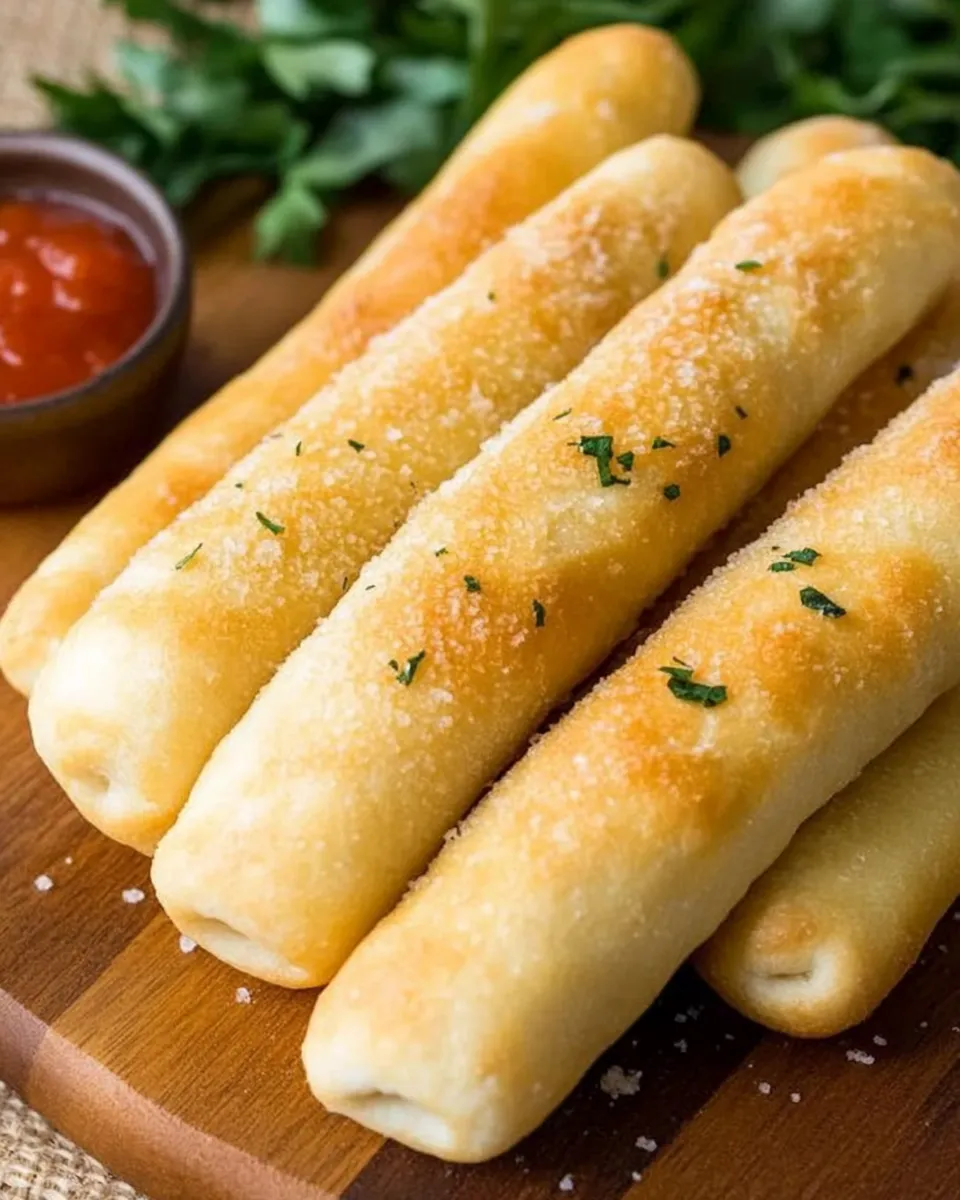
- Garlic butter twist: Add 1 teaspoon of garlic powder to the melted butter before brushing for an extra garlicky punch.
- Herb-infused breadsticks: Mix dried Italian herbs or fresh chopped rosemary into the dough for a fragrant upgrade.
- Cheesy delight: Sprinkle shredded mozzarella or parmesan cheese on top of the breadsticks before baking.
- Whole wheat version: Substitute half the bread flour with whole wheat flour for a nuttier flavor and added fiber.
- Spicy kick: Add a pinch of cayenne pepper or red pepper flakes to the dough or butter for a subtle heat.
How to Store Leftovers
To keep your Olive Garden breadsticks fresh, store them in an airtight container or resealable plastic bag at room temperature for up to 2 days. If you want to keep them longer, wrap them tightly in foil or plastic wrap and freeze for up to 3 months. To reheat, warm them in the oven at 350°F (175°C) for about 10 minutes or until heated through. You can also microwave them for 15-20 seconds, but the oven will keep them crispier.
FAQ
Can I use instant yeast instead of dry yeast?
Yes! If using instant yeast, you can skip the activation step with warm water. Simply mix the instant yeast directly with the flour and other dry ingredients, then add the warm water and melted butter. This can save you a few minutes.
What if I don’t have bread flour, can I use all-purpose flour?
You can use all-purpose flour in a pinch, but bread flour is preferred because of its higher protein content, which helps create a chewier breadstick. If using all-purpose flour, your breadsticks might be a bit softer and less chewy.
Can I make these breadsticks ahead of time?
Absolutely! You can prepare the dough and let it rise, then shape the breadsticks and refrigerate them overnight. Just let them come to room temperature and rise a bit more before baking.
How do I know if my yeast is still good?
To test yeast, mix it with warm water and a pinch of sugar. If it becomes frothy and bubbly within 5 to 10 minutes, it’s active and good to use. If not, it’s best to buy fresh yeast for successful rising.
Conclusion
Making Olive Garden breadsticks at home is easier than you might think, and the results are incredibly rewarding. With just a handful of simple ingredients and a little patience, you can enjoy warm, buttery, and soft breadsticks that rival the restaurant’s version. Whether you stick to the classic recipe or experiment with herbs, cheese, or garlic, these breadsticks are sure to become a favorite in your kitchen. So go ahead, grab your mixing bowl, and start baking – your taste buds will thank you!

Olive Garden Breadsticks
Ingredients
- 1 ½ cups warm tap water NOT boiling or super hot, up to 130°F / 55°C
- 2 tablespoons granulated sugar
- 2 teaspoons dry yeast
- 4 ½ cups bread flour
- 2 teaspoons salt
- 3 tablespoons unsalted butter melted
Instructions
- Start by warming your water to just under 130°F (55°C). In a large mixing bowl, combine the warm water, sugar, and dry yeast. Stir gently and let it sit for about 5 to 10 minutes until the mixture becomes frothy and bubbly.
- Once the yeast is activated, add the bread flour and salt to the bowl. Mix the ingredients until they start to come together into a shaggy dough. Add more flour if the dough feels too sticky, a tablespoon at a time.
- Transfer the dough onto a clean, lightly floured surface. Knead for about 8 to 10 minutes until smooth, elastic, and no longer sticky.
- Lightly grease a large bowl with melted butter or oil. Place the dough inside, turning to coat all sides. Cover and let it rise in a warm, draft-free spot for 1 to 1.5 hours, or until doubled in size.
- Once risen, punch down the dough gently to release air. Turn it onto a floured surface and divide into 12 equal pieces. Roll each piece into a long, thin stick about 6 to 7 inches in length. Place on a greased or parchment-lined baking sheet.
- Cover the breadsticks loosely with a clean towel and let rise again for about 30 minutes.
- Preheat the oven to 375°F (190°C). Bake the breadsticks for 12 to 15 minutes, or until golden brown.
- As soon as the breadsticks come out of the oven, brush them generously with the melted unsalted butter.
- Serve warm with marinara sauce, garlic butter, or enjoy on their own.
Equipment
- Large Mixing Bowl
- Wooden Spoon
- Clean Kitchen Towel
- Baking Sheet
- Oven

